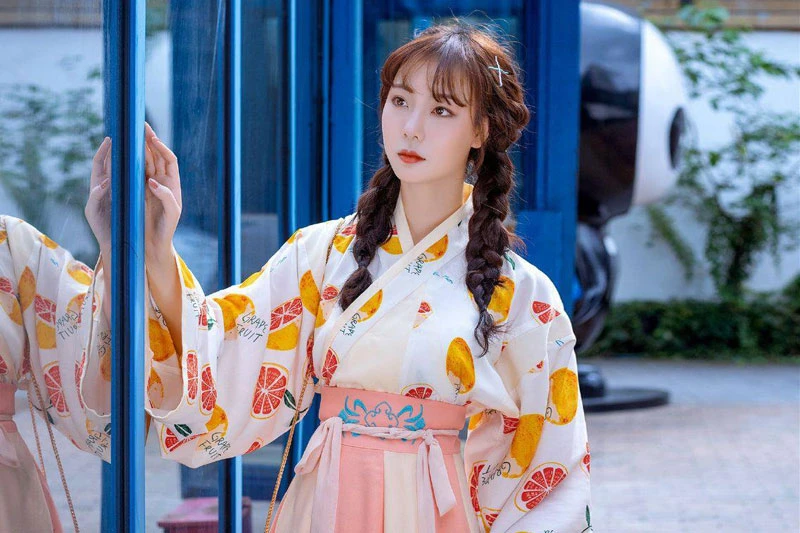The elegant, flowing robes of East Asian traditional attire can make it hard to distinguish differences between them. But the kimono is distinctly Japanese, while the hanfu represents Chinese fashion heritage. There has been some cultural crossover, but these garments evolved from separate cultural lineages.
Did Chinese People Wear Kimonos?
The kimono originated in Japan during the Heian period (794-1185 AD) and became firmly established as a national dress during the Edo period (1603-1867). It represents a uniquely Japanese aesthetic and set of cultural values.
Han Chinese people did not wear the kimono throughout most of history. During the Tang dynasty (618-907 AD), Japanese embassies visiting China brought back elements of Tang clothing that influenced early kimono designs. However, modern kimono further evolved from indigenous Japanese robe styles rather than borrowed Chinese fashion.
In modern times, some Chinese youth participate in Japan’s vibrant cosplay subculture by dressing up in kimonos. Chinese models and actresses may also don kimonos for photo shoots or performances. However, these are theatrical costumes rather than everyday wear. Historically, hanfu was the normal attire for Han Chinese rather than imported kimonos.
Did China Have Kimonos?
While they share similarities as East Asian robes, kimonos developed independently from hanfu. Hanfu encompasses the indigenous clothing traditions of the Han Chinese ethnic group spanning over 3000 years of history.
Meanwhile, kimonos represent a uniquely Japanese fashion evolution. They were not historically a garment worn by Chinese people in everyday life or special occasions.
During the 1930s under Japanese occupation, some elite Chinese socialites in Shanghai did adopt the kimono as a fashion trend. But this was limited Westernized circle, not reflective of mainstream society. For most ordinary Chinese, the hanfu and later qipao gown remained customary attire.
So in summary, kimonos were not traditionally part of historical Chinese dress. China has its own rich indigenous clothing heritage that is distinct from Japanese traditions. Modern cross-cultural borrowing represents theatrical fashion rather than historic practices.
Comparing Hanfu and Kimono
While both are Asian robes, the kimono and hanfu have some clear stylistic differences:
– Hanfu typically has a wrap-over right lapel, while kimono has a left lapel fold. This means the kimono is worn left over right, opposite from hanfu.
– Kimono sleeves are sewn shut, while hanfu has open sleeves. Hanfu sleeves are much wider and looser than fitted kimono sleeves.
– Hanfu has a slimmer and higher waistline and collar compared to kimono’s length and wide collar.
– Hanfu robes are generally longer, with lower side slits compared to kimono’s above-ankle length.
– Formal kimono dating from the Muromachi era feature extremely long, trailing sleeves. Hanfu sleeves are full at the shoulder but do not extend far down.
– Hanfu designs use lighter, brighter colors on average compared to the more muted, subtly flowing patterns of many kimonos.
Of course, there are variations in both forms, but these are some typical distinguishing characteristics. While both are Asian traditional robes, hanfu and kimono have recognizably different stylistic roots.
Preserving Distinct Cultural Heritages
In today’s world of increasing global connections, cultural boundaries can sometimes blur. However, each tradition has unique significance worth preserving. Respectfully appreciating each other’s heritages while recognizing their origins allows deeper cross-cultural understanding to blossom.

